Exam Details
Exam Code
:300-410Exam Name
:Implementing Cisco Enterprise Advanced Routing and Services (ENARSI)Certification
:CCNP EnterpriseVendor
:CiscoTotal Questions
:925 Q&AsLast Updated
:Aug 09, 2025
Cisco CCNP Enterprise 300-410 Questions & Answers
-
Question 31:
Refer to the exhibit.

The administrator successfully logs into R1 but cannot access privileged mode commands.what should be configured to resolve the issue ?
A. aaa authorization reverse-access
B. secret cisco 123! at the end of the username command instead of password cisco123!
C. matching password on vty lines as cisco123!
D. enable secret or enable password commands to enter into privileged mode
-
Question 32:
Refer to the exhibit. AS 111 wanted to use AS 200 as the preferred path for 172.20.5.0/24 and AS 100 as the backup. After the configuration, AS 100 is not used for any other routes. Whichconfiguration resolves the issue?

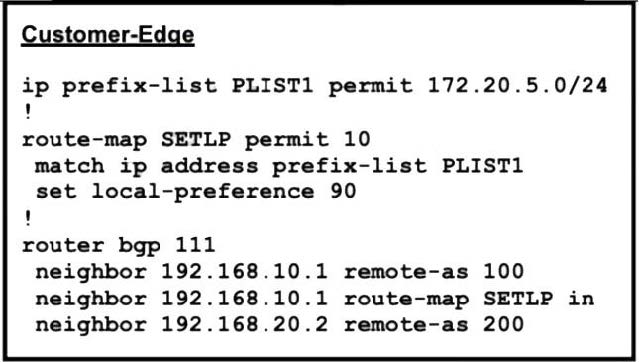
A. route-map SETLP permit 10 match ip address prefix-list PLIST1 set local-preference 110 route-map SETLP permit 20
B. route-map SETLP permit 10 match ip address prefix-list PLIST1 set local-preference 99 route-map SETLP permit 20
C. router bgp 111 no neighbor 192.168.10.1 route-map SETLP in neighbor 192.168.20.2 route-map SETLP in
D. router bgp 111 no neighbor 192.169.10.1 route-map SETLP in neighbor 192.168.10.1 route-map SETLP out
-
Question 33:
Refer to the exhibit. PC-2 failed to establish a Telnet connection to the terminal server. Which configuration resolves the issue?
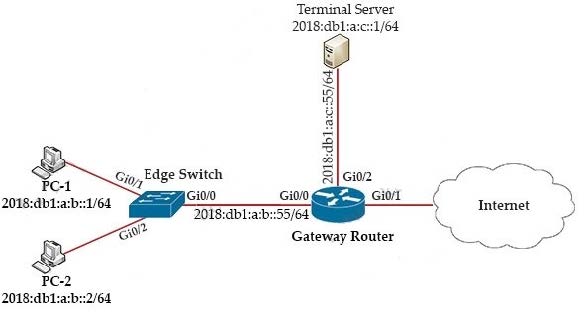
A. Gateway-Router(config)#ipv6 access-list Default_Access Gateway-Router(config-ipv6-acl)#sequence 15 permit tcp host 2018:DB1:A:B::2 host 2018:DB1:A:C::1 eq telnet
B. Gateway-Router(config)#ipv6 access-list Default_Access Gateway-Router(config-ipv6-acl)#permit tcp host 2018:D81:A:B::2 host 2018:DB1:A:C::1 eq telnet
C. Gateway-Router(config)#ipv6 access-list Default_Access Gateway-Router(config-ipv6-acl)#no sequence 20 Gateway-Router(config-ipv6-acl)#sequence 5 permit tcp host 2018:DB1:A:B::2 host 2018:DB1:A:C::1 eq telnet
D. Gateway-Router(config)#ipv6 access-list Default_Access Gateway-Router(config-ipv6-acl)#sequence 25 permit tcp host 2018:DB1:A:B::2 host 2018:DB1:A:C::1 eq telnet
-
Question 34:
Refer to the exhibit.
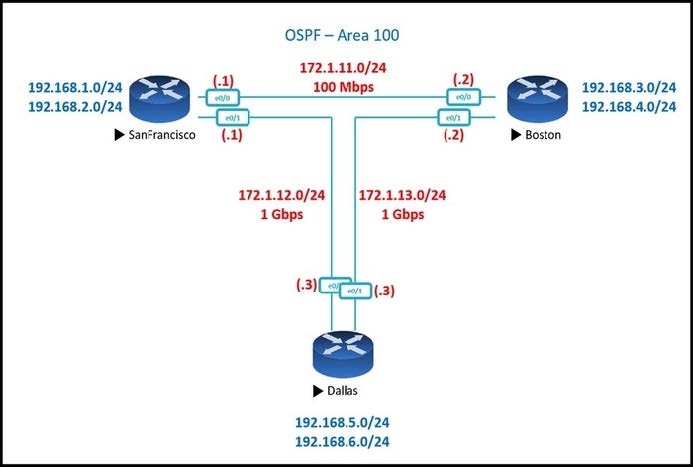
SanFrancisco and Boston routers are choosing slower links to reach each other despite the direct links being up Which configuration fixes the issue?
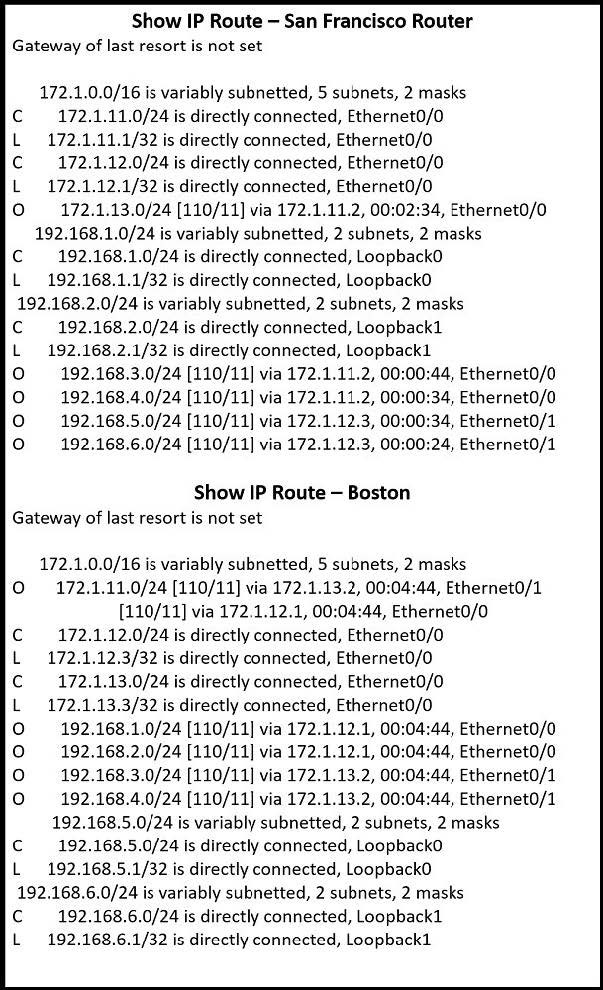
A. All Routers router ospf 1 auto-cost reference-bandwidth 100
B. SanFrancisco Router router ospf 1 auto-cost reference-bandwidth 1000
C. Boston Router router ospf 1 auto-cost reference-bandwidth 1000
D. All Routers router ospf 1 auto-cost reference-bandwidth 1000
-
Question 35:
Refer to the exhibit. The neighbor relationship is not coming up. Which two configurations bring the adjacency up? (Choose two)

A. LA interface E 0/0 ip ospf authentication-key Cisco123
B. NY interface E 0/0 no ip ospf message-digest-key 1 md5 Cisco123 ip ospf authentication-key Cisco123
C. LA interface E 0/0 ip ospf message-digest-key 1 md5 Cisco123
D. LA router ospf 1 area 0 authentication message-digest
E. NY router ospf 1 area 0 authentication message-digest
-
Question 36:
Refer to the exhibit. The network administrator configured redistribution on an ASBR to reach to all WAN networks but failed Which action resolves the issue?

A. The route map must have the keyword prefix-list to evaluate the prefix list entries
B. The OSPF process must have a metric when redistributing prefixes from EIGRP.
C. The route map EIGRP->OSPF must have the 10.0.106.0/24 entry to exist in one of the three prefix lists to pass
D. EIGRP must redistribute the 10.0.106.0/24 route instead of using the network statement
-
Question 37:
Refer to the exhibit. When monitoring an IPv6 access list, an engineer notices that the ACL does not have any hits and is causing unnecessary traffic to pass through the interface

Which command must be configured to resolve the issue?
A. access-class INTERNET in
B. ipv6 traffic-filter INTERNET in
C. ipv6 access-class INTERNET in
D. ip access-group INTERNET in
-
Question 38:
Refer to the Exhibit. A network administrator enables DHCP snooping on the Cisco Catalyst 3750-X switch and configures the uplink port (Port-channel2) as a trusted port. Clients are not receiving an IP address, but when DHCP snooping is disabled, clients start receiving IP addresses.

Which global command resolves the issue?
A. No ip dhcp snooping information option
B. ip dhcp snooping
C. ip dhcp relay information trust portchannel2
D. ip dhcp snooping trust
-
Question 39:
Refer to the exhibit. Troubleshoot and ensure that branch B only ever uses the MPLS B network to reach HQ. Which action achieves this requirement?
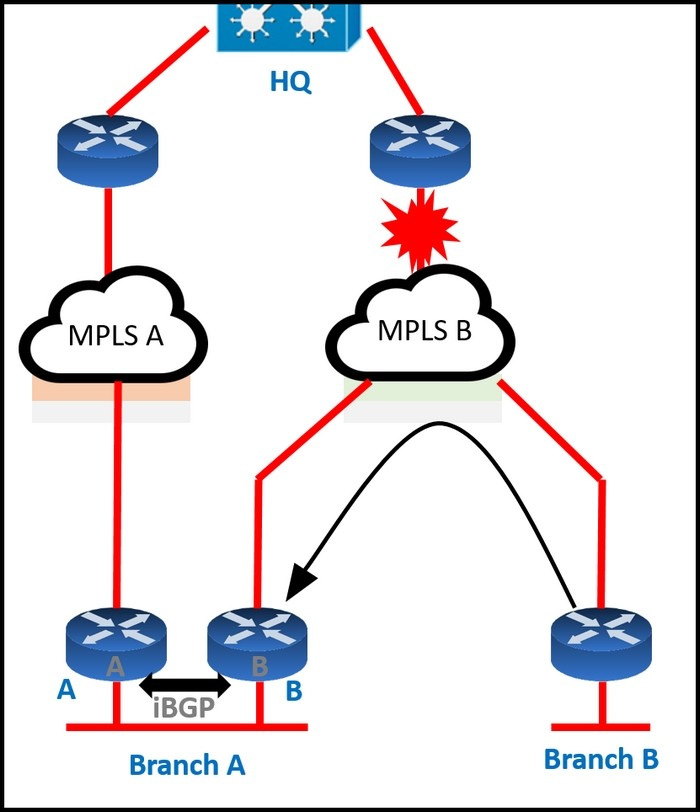
A. Introduce an AS path filter on branch A routers so that only local prefixes are advertised into BGP
B. increase the local preference for all HQ prefixes received at branch B from the MPLS B network to be higher than the local preferences used on the MPLS A network
C. Introduce AS path prepending on the branch A MPLS B network connection so that any HQ advertisements from branch A toward the MPLS B network are prepended three times
D. Modify the weight of all HQ prefixes received at branch B from the MPLS B network to be higher than the weights used on the MPLS A network
-
Question 40:
Refer to the Exhibit. A network administrator added one router in the Cisco DNA Center and checked its discovery and health from the Network Health Dashboard. The network administratorobserved that the router is still showing up as unmonitored.
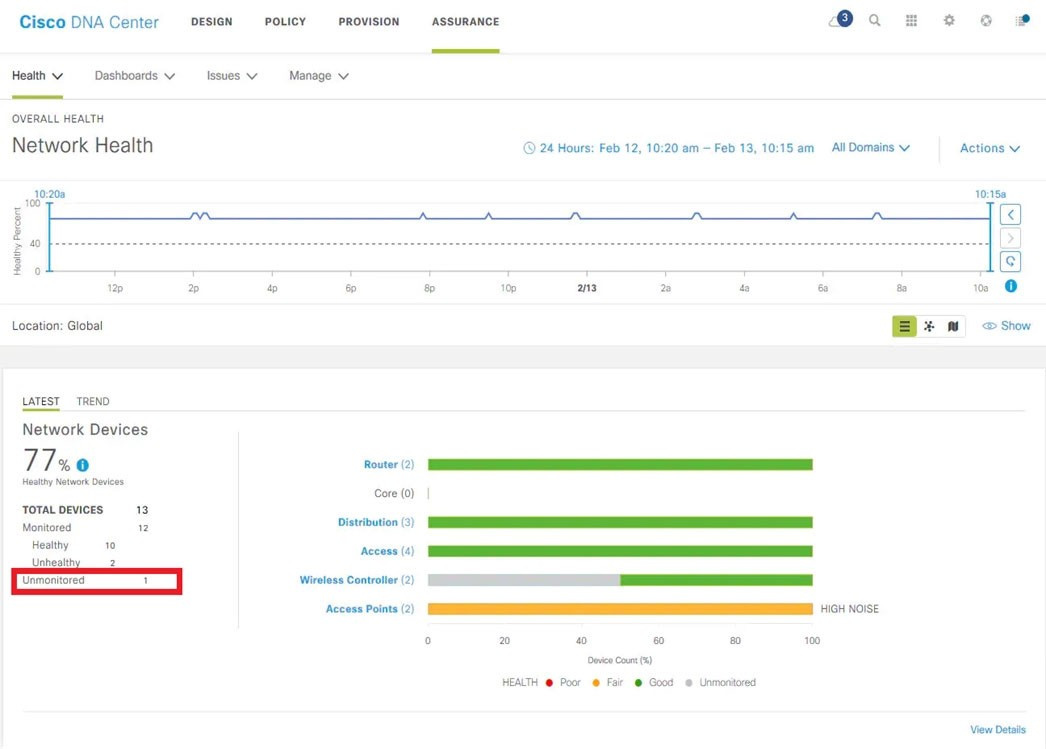
What must be configured on the router to mount it in the Cisco DNA Center?
A. Configure router with NetFlow data
B. Configure router with the telemetry data
C. Configure router with routing to reach Cisco DNA Center
D. Configure router with SNMPv2c or SNMPv3 traps
Related Exams:
300-410
Implementing Cisco Enterprise Advanced Routing and Services (ENARSI)300-415
Implementing Cisco SD-WAN Solutions (ENSDWI)300-420
Designing Cisco Enterprise Networks (ENSLD)300-425
Designing Cisco Enterprise Wireless Networks (ENWLSD)300-430
Implementing Cisco Enterprise Wireless Networks (ENWLSI)300-435
Automating and Programming Cisco Enterprise Solutions (ENAUTO)300-440
Designing and Implementing Cloud Connectivity (ENCC)350-401
Implementing and Operating Cisco Enterprise Network Core Technologies (ENCOR)
Tips on How to Prepare for the Exams
Nowadays, the certification exams become more and more important and required by more and more enterprises when applying for a job. But how to prepare for the exam effectively? How to prepare for the exam in a short time with less efforts? How to get a ideal result and how to find the most reliable resources? Here on Vcedump.com, you will find all the answers. Vcedump.com provide not only Cisco exam questions, answers and explanations but also complete assistance on your exam preparation and certification application. If you are confused on your 300-410 exam preparations and Cisco certification application, do not hesitate to visit our Vcedump.com to find your solutions here.